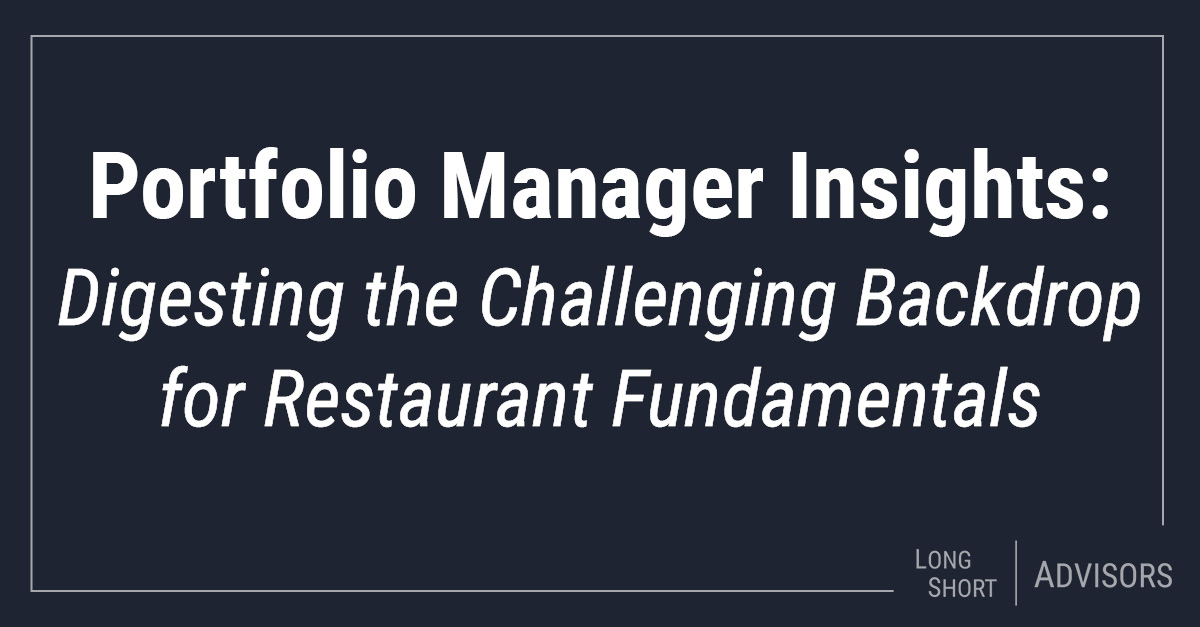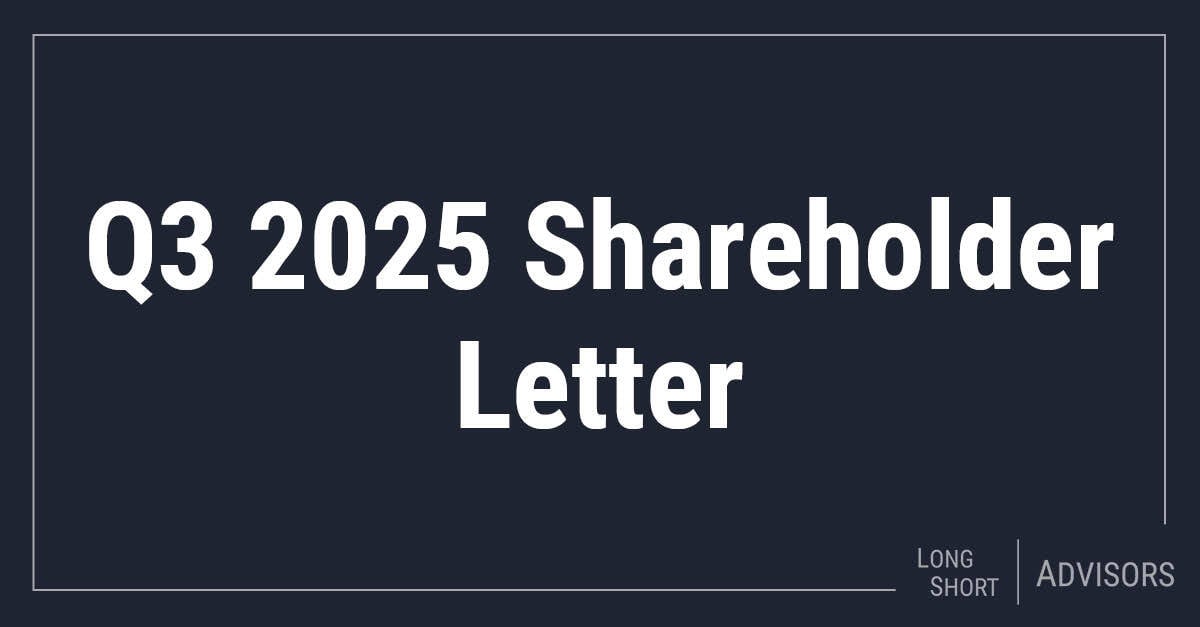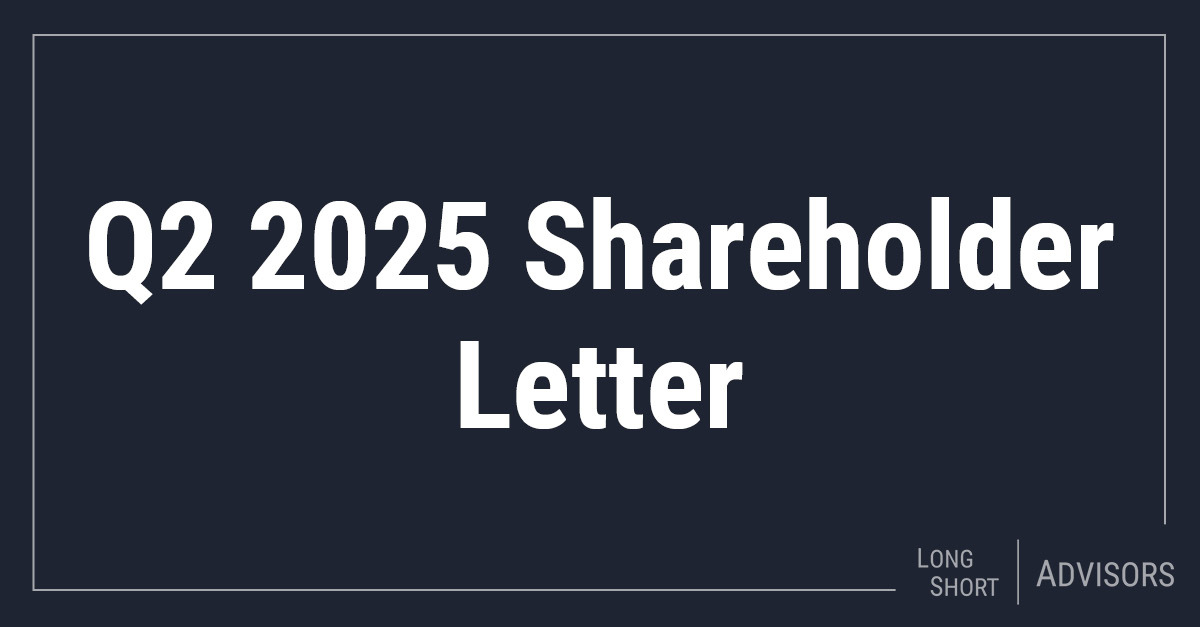Insights from Prospector Partners, Sub Advisor to the LS Opportunity Fund.
We have a long history of investing in restaurants. And, while we are always discerning in our approach, we’ve become even more so recently.
We believe the combination of weak top-line growth, ongoing cost inflation, and weakening pricing power creates a difficult backdrop for near-term restaurant fundamentals.
The main drivers of revenue growth for a typical restaurant are:
- Organic same-store sales growth (guest count growth + growth in average ticket per guest)
- New unit growth
- M&A (i.e. acquiring competitors)
Of these drivers, same-store-sales growth is commonly considered the key indicator of a brand’s underlying health.
“I’ll Have Another, Please”
In recent quarters, the primary driver of same-store sales growth for the industry has been elevated levels of average ticket growth (pricing), while guest count growth (volume) has been muted or negative. This pricing dynamic was fueled by restaurants working to offset outsized increases in labor and commodity costs, along with guests splurging on extra drinks and appetizers following a period of COVID-driven pent up demand. Given the pent up demand, improved consumer balance sheets exiting COVID, and the broad nature of inflation across the economy, these pricing actions were generally tolerated by consumers.
In addition to driving sales growth, the ability to increase prices is critical to maintaining profit margins amidst elevated labor costs and increased food/ingredient costs. While those inflationary pressures have eased off their peaks, restaurants are not out of the woods yet.
Competing for Talent
On the hiring front, labor shortages have eased but competent workers are still in demand. In the broader U.S. economy, wage growth has moderated but remains elevated. And for restaurants with exposure to California, they’ll have to deal with the additional headwind of new legislation that pushes the state’s minimum wage for fast food workers to $20/hr.
On the food procurement side of the business, many items of the shopping basket are lower year-over-year but some of that relief has reversed following recent month-over-month increases. It’s also worth noting that menu composition and commodity exposures vary by restaurant. For example, those who primarily serve beef continue to experience elevated costs and the prospect of relief remains uncertain.
While 2023 saw the American consumer’s resilience on full display, their appetite for continued price increases is showing signs of moderation. In communications with investors on recent earnings calls and at conferences, management teams have flagged softness in demand from the lower income consumer demographic.
French Fry Dilemma
Lamb Weston, supplier to many large fast food chains, sees French fry demand “at or below” the category’s historical growth rate. On a recent conference call, one of their largest customers described a challenging consumer environment in which customers are seeking affordable options after years of cumulative inflation across their personal budgets. Who can blame them?
According to Restaurantbusinessonline.com, the price of a cheeseburger at that franchise has increased 55% since 2021. Earlier in this inflation cycle, restaurants could justify their price increases by pointing out similar price hikes at their fellow food peers – both restaurant competitors and grocery stores – but more affordable alternatives are starting to emerge.
Recent economic data shows that CPI: Food Away From Home (the cost of dining out/getting takeout) is rising faster than CPI: Food At Home, or to put it more plainly, prices are rising faster at restaurants than at the grocery store.
Cheap Eats
The last time a similar gap in the data emerged was in 2016-2018, a period which some industry observers named “The Value Wars,” where restaurant chains relied on more frequent discounts and value-oriented promotions to stand out to value-seeking consumers. It might be too early to call it a war, but the generals are rounding up their troops. In recent weeks, discussion from industry players such as Wendy’s and Jack in the Box underscore a renewed emphasis on providing value, evidenced by Wendy’s $5 Biggie Bag, or Jack’s Munchie Meal platform.
In this environment, we’re keeping a close eye on the health of the consumer and how their spending behaviors change. We look to avoid companies that have seen their relative value proposition erode after taking excessive menu pricing, or those who continue to face outsized cost pressures in food and labor. At the same time, we prefer those that have run their business in a more prudent manner in which the brand maintains their value-proposition for customers without sacrificing profitability.








